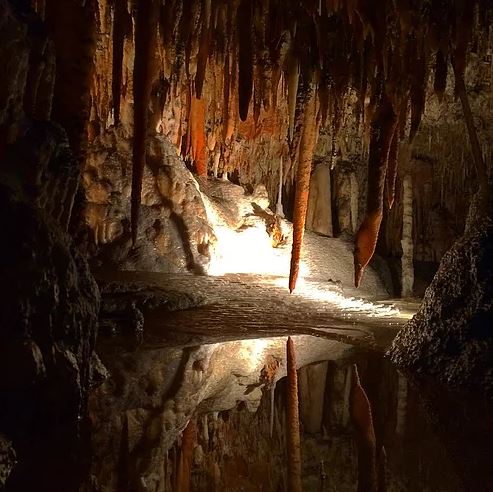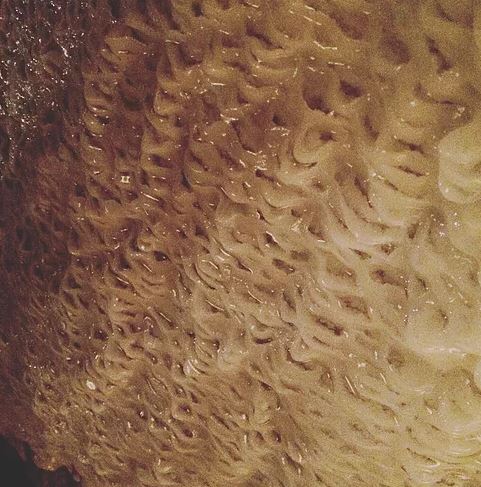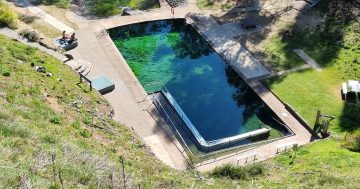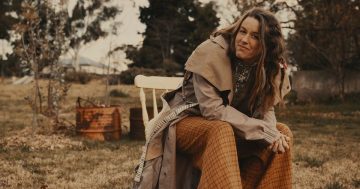In an already diverse landscape, Yarrangobilly Caves adds an x-factor to South East NSW that is rare and special.
Despite being brought up Catholic, I haven’t had religion for a long while. Still, I remember fondly the time spent in old, cool churches – the smell of stone, the peace, the sense of endless time.
The late folk singer Michael Kennedy described how nature’s beauty can evoke a spiritual response – “Ceiling clouds swirl, aisles of bloom curl round the wild cathedral.”
Natural spaces, like places of worship, can provide sanctuary and help us connect with who we really are.
During the recent school holidays, my family and I visited Yarrangobilly Caves in Kosciuszko National Park.
On the way from Cooma we drove through the epic and faltering landscape of Adaminaby and Kiandra, old goldfields with diggings and ditches full of snow.
Brumbies wander this country with majesty and bouncy playfulness. Their colours blend with the patchy wild scrub; despite being equine intruders, left over from last century and stranded in the wrong land, they’re elegant.
We paid our cave entry fees, and did a tour of Yarrangobilly’s Jersey Cave, which takes about an hour and half.
I hadn’t been underground for years.
I used to do it a lot, at Wee Jasper and Wyanbene and Cooleman, as a teenage scamp who liked to wriggle through crawl spaces. This was much tamer, but an incredible experience nonetheless.
Caves are like slow, slow gardens.
It’s springtime, and I’ve been watching my sunflowers shoot up over the last few days. They manage a centimetre overnight, no worries.
The “cave straws” that reach down from the cave ceilings of Yarrangobilly – which look as you’d imagine – like straws, take 100 years to grow a single centimetre.
Many of the cave straws at Yarrangobilly are much longer – 20 or 30 centimetres; 2000 or 3000 years old.
My kids are 6 and 4, and they are surprisingly quiet and attentive (when they’re not wrestling each other for the torch).
They seem to understand the fragility of the formations. They know that the oil from their fingertips could stop them forming, and don’t reach for them. It’s surprising.
The names of cave formations are evocative – flowstones, shawls, pillars.
They’re all incomprehensibly ancient, but look like they could have grown through winter, like icicles or frozen waterfalls.
Beautiful, still rock pools are edged by rimstone dams and grow dogtooth spars – angular, squat crystals that cluster. These pools are otherworldly.
Some flowstones look like intricately woven fettuccine, cascading over metres.
All have formed as the fossil-rich limestone of the valley is dissolved by acidic rainwater, and redeposited as calcite.
According to National Parks, local Wolgalu people didn’t enter the caves much at all – formations survived thousands of years of indigenous custodianship.
But like so many caves, Jersey Cave was raided for souvenirs over the last 150 years. The cave is still stunning, but some caverns are stained darkly by the smoke from bygone kerosene lamps.
I’ve often felt as though caves are alive. Or that, at least, they can tell us something important about ourselves.
They tell us that we are small, transient, destructive, and peace-loving.
We’re a confused bunch, and caves can provide a beautiful space to meditate and contemplate.
Perhaps we’ll always feel like impostors in such spaces. But thankfully these caves are now protected, and we can continue to visit and appreciate their lasting beauty.
Yarrangobilly Caves are open daily for you to explore and ‘feel’ for yourself.
Ranger talks really add to the experience as does a swim in the thermal pool!
Click here for more details
Kate Burke is a sought-after vocalist and musician based in Candelo and is completing her Masters in Science Communication at the Australian National University. This article originally appeared on ‘Raisin – Regional Science and Innovation’.














